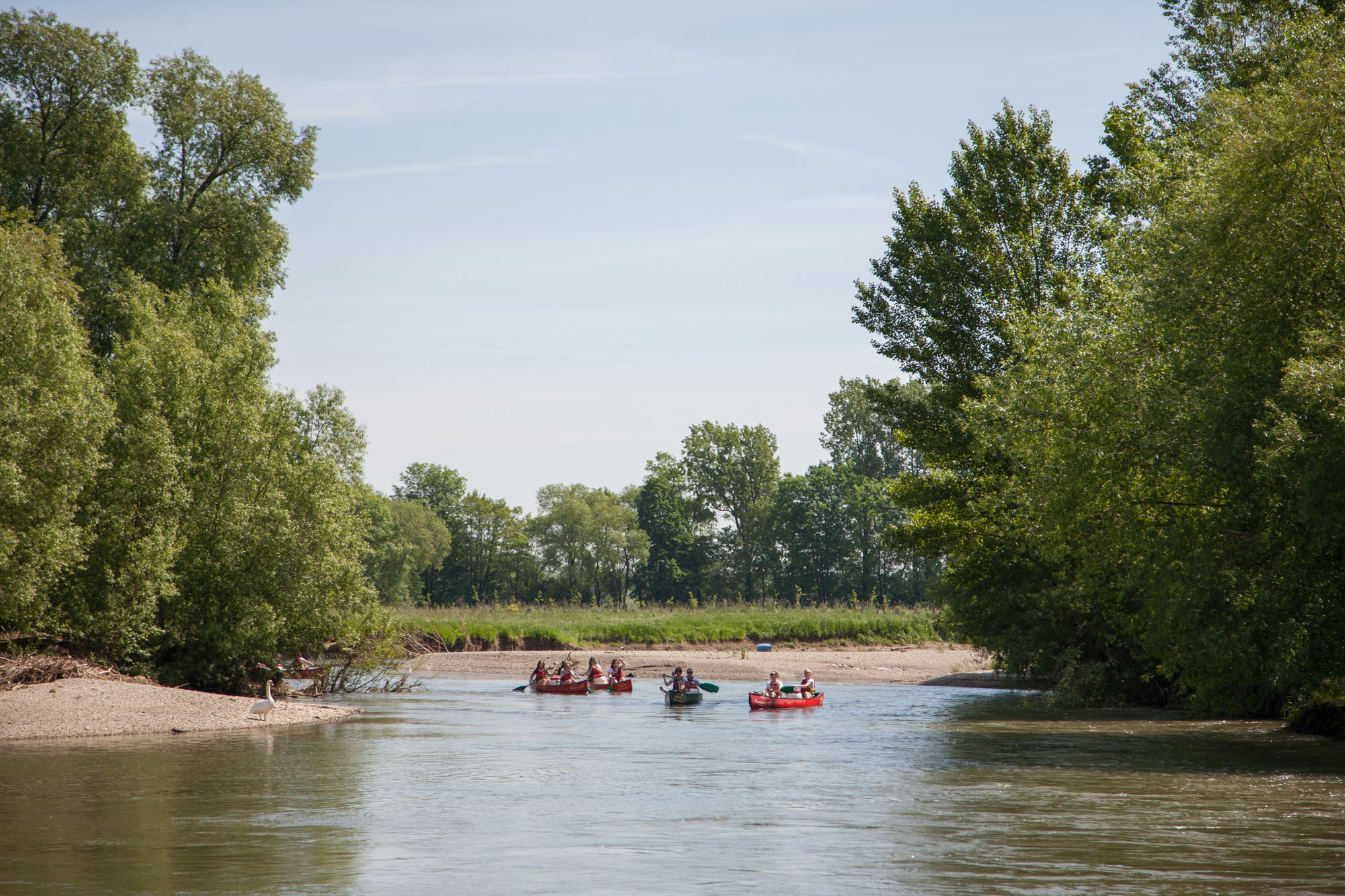An Outstanding Natural Environment
The Grand Ried: a patchwork of landscapes
The Grand Ried is a region in Central Alsace, located between Strasbourg and Colmar. It is bordered by the river Ill and the river Rhine. The Canöes du Ried nautical base is in Sélestat, right in the heart of the Grand Ried.
The shallow, transparent waters are ideal for canoe trips
The Ill is a river with variable flow patterns, blocked between the alluvial terrace of the Rhine and the foothills of the Vosges mountains. It runs through a vast plain and is fed by every river from the south to the north of Alsace (Doller, Thur, Lauch, Fecht, Liepvrette, Bruche, Zorn…).
Every year, in winter and springtime, the Ill leaves its bed several times to flood a vast zone of meadows, forests and cultivated land between Colmar and Erstein. When this happens, the waterways become too dangerous to navigate on, however it is the ideal moment to go canoeing, quite serenely, on the vast stretches of shallow water which cover the Ried.
On the other hand, over the summer, the Ill can dry up for several months in the Haut-Rhin because its bed is perched above the source of a groundwater table, which it feeds. Fortunately, north of Colmar, the groundwater source feeds the river and consequently there is always enough water to go canoeing on.
Although the Ill’s channel has been heavily modified in the Haut-Rhin, in particular between Ensisheim and Colmar, fortunately, it has escaped any such modifications to its natural pathway in the Bas-Rhin.
The Ill branches out between Illhaeusern and Strasbourg (Schiffwasser, Bornen, petit Ill…), offering river users waterways of varying sizes, and routes which take them more or less through the forest.
The Illwald: An unspoilt nature reserve
Its diffluences are often less tame than the Ill itself, notably the Bornen at Ebersmunster, which has very interesting river dynamics, with a very well-developed system of alluvial channels and deposits in its many meanders.
The eroded banks offer an ideal nesting ground for kingfishers, whereas the plovers prefer to lay their eggs on the gravel beaches.
In summer, there are more birds on the Ill and its tributaries than any other animal: kingfishers, grey herons, swans, mallards, wagtails.
If you’re lucky, as you look across the meadows, you may catch sight of a curlew (symbol of the preservation of the Ried’s flood plains), some Illwald fallow deer, or even one of the beavers which have recently been reintroduced into the Ill network.

 DE
DE EN
EN FR
FR

